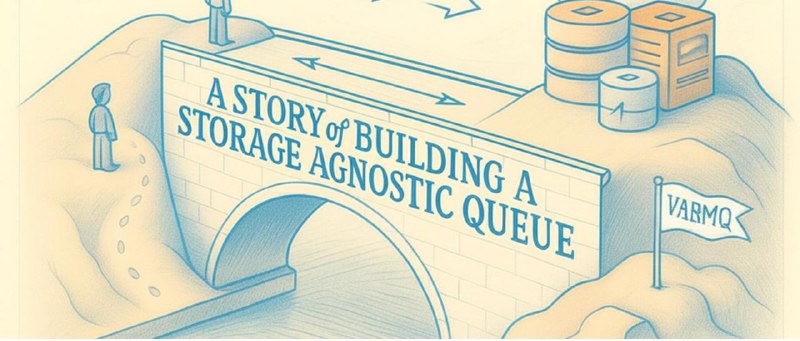tg-me.com/golang_books/982
Last Update:
🛠️ История создания “storage-agnostic” message queue
Автор — Fahim Faisaal — делится опытом разработки гибкой очереди задач на Go, которая может использовать любые хранилища: in-memory, Redis, SQLite и др. :contentReference[oaicite:0]{index=0}
Контекст:
Занимаясь на Go, автор вдохновился инструментами из Node.js экосистемы (BullMQ, RabbitMQ) и захотел сделать что-то похожее, но с нуля, без зависимостей. Так родилась идея — сначала он создал Gocq (Go Concurrent Queue): простую concurrent-очередь, работающую через каналы :contentReference[oaicite:1]{index=1}.
⚡ Основная проблема
Gocq отлично работал в памяти, но не поддерживал устойчивое хранение задач.
Автор задумался: а можно ли сделать очередь, не зависящую от конкретного хранилища — так, чтобы её можно было подключить к Redis, SQLite или совсем без них?
🧱 Как это реализовано в VarMQ
После рефакторинга Gocq был разделён на два компонента:
1. Worker pool — пул воркеров, обрабатывающих задачи.
2. Queue interface — абстракция над очередью, не зависящая от реализации.
Теперь воркер просто берёт задачи из очереди, не зная, где они живут. :contentReference[oaicite:2]{index=2}
---
### 🧠 Пример использования
- In-memory очередь:
w := varmq.NewVoidWorker(func(data any) {
// обработка задачи
}, 2)
q := w.BindQueue()
- С SQLite-поддержкой:
import "github.com/goptics/sqliteq"
db := sqliteq.New("test.db")
pq, _ := db.NewQueue("orders")
q := w.WithPersistentQueue(pq)
- С Redis (для распределённой обработки):
import "github.com/goptics/redisq"
rdb := redisq.New("redis://localhost:6379")
pq := rdb.NewDistributedQueue("transactions")
q := w.WithDistributedQueue(pq)
В итоге воркер обрабатывает задачи одинаково — независимо от хранилища. :contentReference[oaicite:3]{index=3}
✅ Почему это круто
- Гибкость: адаптеры позволяют легко менять хранилище без правок воркера.
- Минимальные зависимости: в ядре — zero-deps, весь функционал — через адаптеры.
- Self-hosted и легковесно: можно развернуть локально или в продакшене.
- Написано на Go: использует горутины и каналы, удобен и эффективен.
📣 Отзывы сообщества
На Reddit отметили, что автор добился "queue system that doesn’t care if your storage is Redis, SQLite, or even in-memory" :contentReference[oaicite:4]{index=4}
🔗 Ссылки
- Статья: A Story of Building a Storage‑Agnostic Message Queue на DEV :contentReference[oaicite:5]{index=5}
- GitHub VarMQ (Var-storage-agnostic message queue): репозиторий с кодом адаптеров и примерами использования :contentReference[oaicite:6]{index=6}
Итог: VarMQ — это элегантное решение на Go для создания задач-очереди, универсально по отношению к хранилищу: выбрал нужный адаптер — и система работает.
📌 Читать
BY Golang Books

Share with your friend now:
tg-me.com/golang_books/982
